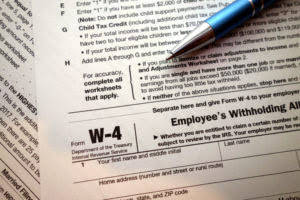
However, if the company also wanted to keep year-to-date information from month to month, a separate set of records could be kept as the company progresses through the remaining months in the year. For our purposes, assume that we are closing the books at the end of each month unless otherwise noted. Business transactions identified are then analyzed to determine the accounts affected and the amounts to be recorded. For example, a personal loan made by a business owner that does not have anything to do with the business shall not be recorded in the books of the business.
- The temp agency will bill the retailer on January 6 and the retailer is required to pay the invoice by January 10.
- In this step, the adjusting entries made for accrual of income, accrual of expenses, deferrals under the income method, and prepayments under the expense method are reversed.
- It requires some time and a little effort for the concepts to sink in.
- At the beginning of new accounting period, accountant reverses all adjusting entries which record at the end of previous period.
- For example, the service company who provide consulting service to client.
- To simplify the recording process, special journals are often used for transactions that recur frequently, such as sales, purchases, cash receipts, and cash disbursements.
- Prepare the closing entries for Frasker Corp. using the adjusted trial balance provided.
It’s best practice not to delete journal entries, even if there’s a mistake. The best way to correct your accounting records is to record a reversing entry and create a fresh and correct journal entry. To keep your accounting records clean, you record a reversing entry on the first of the next month that turns your liability back to $0. Then, when the bill comes in for $9,500, you record a new journal entry for $9,500 in consultant fees and accounts payable. Preparing reversing entries is an optional, intermediate step between recording revenue or expenses and having cash enter or leave your business. Many business owners implement reversing entries to reduce the likelihood of double-counting revenue and expenses.
Adjusting Entries and Reversing Entries
But wait, didn’t we zero out the wages expense account in last year’s closing entries? This reversing entry actually puts a negative balance in the expense. Paul can reverse this wages accrual entry by debiting the wages payable account and crediting the wages expense account. Reversing entries are made because previous year accruals and prepayments will be paid off or used during the new year and no longer need to be recorded as liabilities and assets.

On Sept. 30, Timothy records a payroll accrual to reflect wages owed but not paid for Monday, Tuesday, and Wednesday. First, we can’t recognize the whole amount as expense cost we not yet consume the service yet, so we should record as prepayment (Asset account). In order to receive a discount from internet service provider, Company D pays the annual fee of $ 2,000 which covers from 01 June 202X to 31 May 202X+1. The accountant is preparing the adjustment at year-end to correct this balance. Advisory services provided by Carbon Collective Investment LLC (“Carbon Collective”), an SEC-registered investment adviser.
BUS103: Introduction to Financial Accounting
These posted entries will then translate into a post-closing trial balance, which is a trial balance that is prepared after all of the closing entries have been recorded. The accounts are closed to a summary account (usually, Income Summary) and then closed further to the capital account. Again, take note that closing entries are made only for temporary accounts.
- It is the end of the year, December 31, 2018, and you are reviewing your financials for the entire year.
- Reversing entries are a type of journal entry, which is how businesses record transactions.
- Not all transactions and events are entered into the accounting system.
- The goal of the reversing entry is to ensure that an expense or revenue is recorded in the proper period.
- Reversing entries, which are generally recorded on the first day of an accounting period, delete adjusting entries from the previous period.
- At the beginning of the month B that expense is reversed via a reversing entry.
- Therefore, it will not appear on any trial balances, including the adjusted trial balance, and will not appear on any of the financial statements.
Printing Plus has $100 of dividends with a debit balance on the adjusted trial balance. The closing entry will credit Dividends and debit Retained Earnings. As the name suggest, reversing entry is recorded by reversing the accounts nature. All of https://www.bookstime.com/ the debits and credits accounts are recorded as contra debits and credits with the same amount to “nullifying” the accounting impact. In other words, the accounts with debit nature will be credited by the same amount in the reversing entries.
Example of Reversing Entries
Editorial content from The Ascent is separate from The Motley Fool editorial content and is created by a different analyst team. And, as we’ve seen in many Hollywood films, bad things happen when you try to mess with the past.
Adjusting entries are made for accrual of income, accrual of expenses, deferrals (income method or liability method), prepayments (asset method or expense method), depreciation, and allowances. Some errors could exist even if debits are equal to credits, such as double posting or failure to record a transaction. There are several scenarios where reverse entries come into play. One is when it comes to accrued payroll, where you would need to make a reverse entry the following month when wages are actually paid.
Accounting without the reversing entry:
It is important to understand retained earnings is not closed out, it is only updated. Retained Earnings is the only account that appears in the closing entries that does not close. You should recall from your previous material that retained earnings are the earnings retained by the company over time—not cash flow but earnings.
- This is the same figure found on the statement of retained earnings.
- This is because of the reversing entry which includes a credit to Rent Expense for $4,000.
- The income summary account is an intermediary between revenues and expenses, and the Retained Earnings account.
- You might be asking yourself, “is the Income Summary account even necessary?
- Business transactions are usually recorded using the double-entry bookkeeping system.
You’d then have to do some accounting and arithmetic gymnastics to record the $9,500 invoice accurately. Here’s why you should implement reversing entries in your small business accounting system. Prepare the closing entries reversing entries are optional for Frasker Corp. using the adjusted trial balance provided. Companies are required to close their books at the end of each fiscal year so that they can prepare their annual financial statements and tax returns.
Accounting with the reversing entry:
Real or permanent accounts, i.e. balance sheet accounts, are not closed. When the accounts are already up-to-date and equality between the debits and credits have been tested, the financial statements can now be prepared. The financial statements are the end-products of an accounting system. A trial balance is prepared to test the equality of the debits and credits. All account balances are extracted from the ledger and arranged in one report.
